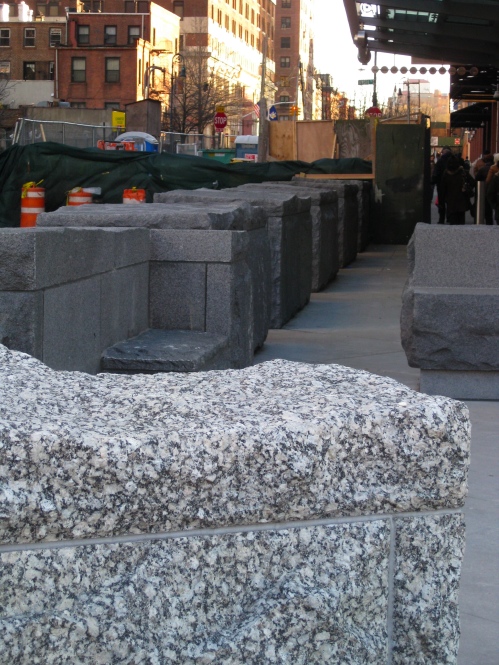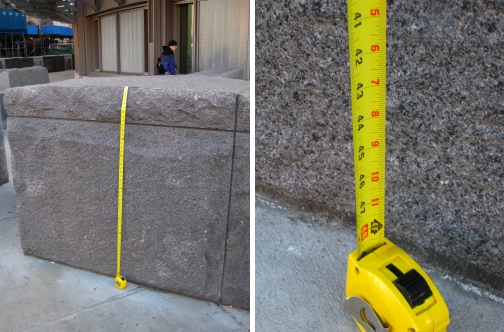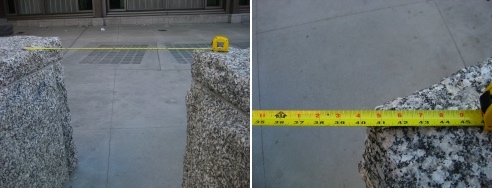LIRR’s Brooklyn Bunker: More Extreme Than NYPD Counterterror Guidelines
 Security barriers mar the Atlantic Terminal sidewalk. Image: Noah Kazis.
Security barriers mar the Atlantic Terminal sidewalk. Image: Noah Kazis.Brooklyn’s new Long Island Rail Road terminal opened earlier this month to generally positive reviews for its airy interior. Outside the station? That’s an entirely different matter.
The Brooklyn Paper called the "sarcophagus-sized slabs of stone" on the sidewalk — which nearly come up to one’s neck — "a grotesque eyesore." City Council Member Letitia James agreed, telling Gothamist, "This is a facility that is supposed to celebrate openness, yet they put hideous barricades in front of it."
The barriers weren’t in the original renderings for the site, which architect John di Domenico hoped would become a "civic presence." They were added after the fact for security, according to the Brooklyn Paper.
We’re still trying to figure out just who decided to go for total overkill here. Requests are in with di Domenico + Partners, the NYPD, the MTA, and the Department of Design and Construction. While we haven’t pinpointed exactly where the order came from, the fortress mentality on display exceeds even the NYPD counterterrorism division’s own guidelines.
We did get to sift through the NYPD’s 2009 report, Engineering Security: Protective Design For High Risk Buildings. As a major transit hub, the Atlantic Terminal falls under the NYPD counterterrorism division’s "High Tier" category, for which they prescribe additional security measures. Those measures include "perimeter security," which the NYPD justifies like so: "The best way to minimize the impact of an attack is to keep the threat away from a building."
The NYPD also puts forward some basic guidelines about just how much protection they think is necessary. That’s where the real surprise is. Here’s what the city’s counterterrorism experts recommend:
With respect to bollards, the NYPD recommends four feet of clear spacing, bollard sleeve to bollard sleeve. In general, New York City recommends that bollards measure between 30 and 36 inches in height.
And here’s how the Atlantic Terminal sarcophagi measure up, based on an informal analysis conducted by Streetsblog today. The barriers loom a full foot higher than NYPD’s own recommendations:
 Image: Noah Kazis.
Image: Noah Kazis.
 Image: Noah Kazis.
Image: Noah Kazis.Some of the spaces between barriers are little more than three feet apart, barely enough for pedestrians to squeeze through and more draconian than the NYPD’s suggested four feet. All you transit riders trying to get to your platform, consider yourself neutralized.